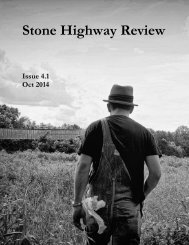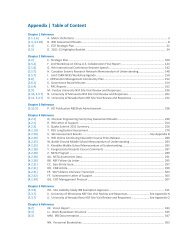Fries
Fries
Fries
You also want an ePaper? Increase the reach of your titles
YUMPU automatically turns print PDFs into web optimized ePapers that Google loves.
ICAME Journal No. 34However, a more detailed analysis of the context of use (even a simple noting ofwhich intonation type was more frequent on the first question asked of acontestant), and a full count of all the instances of repeated questions, and theircontexts might have helped decipher the difference in interpretation of risingand falling intonations on yes-no questions.3.4 The notion of systemWhile <strong>Fries</strong> emphasized the paradigmatic aspects of language, he had no formalizednotion of system (such as is used within Systemic Functional linguisticsand Stratificational grammar). Rather his notion of ‘contrasting conflicting signals’focused on examining the various structural resources used to express similargrammatical relations. However, having said that, it is useful to note thatbecause he emphasized grammatical resources that expressed similar grammaticalmeanings, much of his work is reinterpretable within linguistic theories thatdo formalize descriptions of the choices available to speakers.3.5 <strong>Fries</strong>’s historical results and the notion of a single unified system for thelanguageIn the 1940’s and 50’s, when <strong>Fries</strong> was doing some of his most important work,the dominant view within structuralism was to assume the existence of a singlecoherent system for each language. Admittedly, the linguists of the time werevery much aware that dialects existed, and, further, that no two individuals usedexactly the same language patterns. For the most part these facts were ignored intheoretical discussions; however in a few cases some linguists attempted to dealwith them by developing the notion of idiolect (the dialect used by an individual).Because of his historical corpus work, and particularly because he countedthe relative frequencies of conflicting contrasting items, <strong>Fries</strong> took a very differentview. One can see why from the pattern presented in Table 4. Every time<strong>Fries</strong> looked at the texts in his historical data he discovered instances of old systemsthat were being displaced, as well as instances of new systems that were indevelopment and about to take over. As he said (1970:924):…there is no time at which one can make a cross section of the grammaticalforms actually in use, in an adequate sample, without findingthe evidence for an exceedingly complicated ‘time depth’ of approximately100 years. 15110








